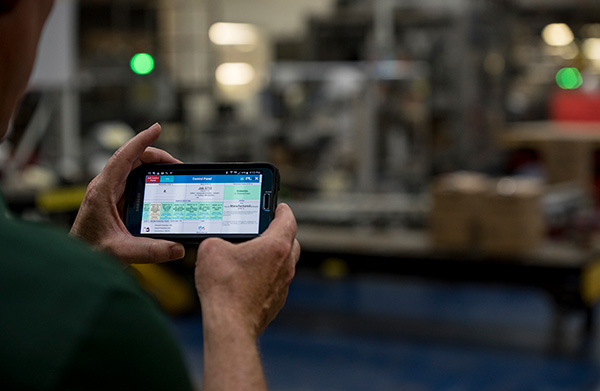Inventory management faces challenges due to fluctuating inflation and supply chain disruptions. Digitization and AI offer solutions.
By Ara Surenian, Vice President Product Management, Rockwell Automation
In today’s economy, organizations across manufacturing and supply chain industries are challenged with upward pricing pressure. Over the past few years, the percentage change of the consumer price index has varied greatly, leading to significant variance in inflation. Despite hitting a 40-year high a few years ago, domestic inflation has now hit its lowest level in three years, which can be a critical factor in consumer and business purchasing decisions. These drivers can have significant impacts on inventory management, where inaccuracies can lead to significant losses.
Traditional inventory optimization relies on two primary inputs: the ordering process and buffer stock levels. The lack of visibility into real-time changes in inventory levels can create challenges in effectively forecasting customer demand. Legacy and manual inventory management systems often struggle to keep pace with rapidly changing business conditions, like fluctuating demand or supply chain disruptions. This can manifest into a high risk of overstock, leading to potential spoilage and wastage. Excess inventory can hinder cash flow as funds are invested in products that may not sell quickly, limiting available capital.

To alleviate these challenges, organizations have prioritized digitization to gain better control over inventory. As operations digitize, organizations are unpacking how they can better leverage data to improve decision making. End-to-end visibility across the entire organizational ecosystem can be achieved through digitization. With digitized inventory management, organizations are taking the first step to improve control over demand.
Computerized supply chains can replace manual data handling, which can be subject to human error. Sharing data seamlessly across departments and analyzing it in real-time improves information flow and reduces reliance on reactive communications, like phone calls or emails. Unlike traditional supply chains, digital systems can reduce bullwhip and caterpillar effects, where fluctuations in demand propagate through the supply chain. With complete visibility, companies can proactively respond to disruptions or demand spikes, minimizing their negative consequences.
Advanced analytics is widely used in manufacturing, such as production and maintenance. Companies can apply predictive analytics and trend analysis to inventory and the entire supply chain using a smart manufacturing platform and demand and supply software. Though these tactics prove effective, the industry is measuring the potential benefits of artificial intelligence (AI) optimizing inventory.
Navigating unexpected inflationary pressure relates to more than just cost reduction. Inventory optimization requires the predicting, handling and dispersing of accurate amounts of inventory in order to meet demand. Automated, digitized inventory systems balance a wide range of key performance indicators, statistics, requests and transactions. Though these systems provide economic benefits, additional technology offers a compelling advantage.
Advancing inventory systems beyond simple automation will require the use of AI. Inventory optimization that leverages this technology must first manage several variables, such as forecast accuracy, material lead time, minimum order quantity and capacity constraints. AI inventory optimization can take assessments a step further, to optimize materials with first in, first-out valuation; expiration monitoring; and improved regulation and compliance.
AI can be used in inventory optimization to:
Ensuring the optimal implementation of this technology in inventory management will require the following:
The implementation of AI in inventory optimization is still developing. However, it does signify a growing trend towards the digitization of business processes. By embracing AI-powered inventory management, organizations can maintain a competitive edge by making data-driven decisions that anticipate market trends and mitigate risks. As the economy continues to work in flux, the potential benefits of AI in inventory optimization are more apparent than ever.

Ara Surenian is a supply chain veteran with over 30 years of manufacturing and technology experience. He currently leads product management and engineering for Plex Systems Advanced Supply Chain Planning Suite. Ara enjoys advising companies and sharing his knowledge at industry events and business seminars. He is a member of the Association for Supply Chain Management and the Institute of Business Forecasting.
In this episode, I sat down with Beejan Giga, Director | Partner and Caleb Emerson, Senior Results Manager at Carpedia International. We discussed the insights behind their recent Industry Today article, “Thinking Three Moves Ahead” and together we explored how manufacturers can plan more strategically, align with their suppliers, and build the operational discipline needed to support intentional, sustainable growth. It was a conversation packed with practical perspectives on navigating a fast-changing industry landscape.